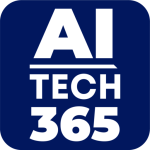Bloomberg announced the introduction of a new alternative data function, ALTD <GO>, on the Bloomberg Terminal. For the first time, customers can get an early read on company performance, side-by-side with the traditional fundamental data for which Bloomberg has long been known. ALTD <GO> supports equity analysts and portfolio managers with intra-quarter insights and can be easily incorporated into research workflows – alongside consensus estimates, company news, research, and guidance – well ahead of earnings announcements.
Currently, alternative data adoption by investors is limited by the high cost of quality datasets and the requirement of building dedicated teams of data scientists in order to utilize data effectively in research workflows. Through the Bloomberg Second Measure acquisition completed in 2020, Bloomberg began offering the highly sought-after consumer transaction data feed and analytics products. Now, through ALTD <GO>, all Bloomberg Terminal users can easily incorporate consumer transaction data analytics, location analytics from launch partner Placer.ai, and other types of alternative data into their research workflows to better inform their investment strategies.
“With ALTD <GO>, we are democratizing access to alternative data by seamlessly integrating it into the Bloomberg Terminal alongside traditional market data, broker research, estimates and news,” said Shawn Edwards, Bloomberg’s Chief Technology Officer. “By launching this product, we are empowering our clients with the ability to gain faster and deeper insights into the performance of companies and economies. The future of investment research will be driven by data, and Bloomberg will continue to invest in innovative products and technologies that enable our clients to make better data-driven investment decisions.”
Bloomberg Second Measure serves as the flagship data analytics source for ALTD <GO>. Within the function, it uses aggregated analytics from billions of credit card and debit card purchases to provide near real-time consumer transaction insights on over 300 public tickers, with this list expected to grow rapidly in the coming months. ALTD <GO> also includes data from location analytics leader, Placer.ai, which analyzes foot traffic data. Placer.ai utilizes a privacy by design approach to incorporate data from a panel of tens of millions of mobile devices, applying machine learning and AI algorithms to make estimations on visits to retail locations across the US. Bloomberg plans to strategically add additional alternative data sources based on customer demand.
“Bloomberg is breaking down a critical barrier to enable wider utilization of alternative data, and we are thrilled to be the launch partner for this vision. Location analytics presents a critical lens to viewing true company performance and bringing this perspective into a unified view is a leap forward in empowering investors to deepen their understanding of market opportunities,” said Koby Ben-Zvi, President of, Placer.ai. “Through ALTD <GO>, Bloomberg Terminal users can deploy our foot traffic analytics to generate insights into venues and consumer trends and optimize decision-making.”
Richard Lai, Global Head of Alternative Data in Bloomberg’s Office of the CTO added, “Alternative data enables customers to gain faster, deeper insights into company performance. The launch of ALTD <GO> is just the beginning. We will continue expanding the universe of high-quality alternative datasets available via Bloomberg‘s products, and enhancing the unified data model that ties these datasets together. This will enable us to create more powerful analytics to support our customers in finding differentiated investment opportunities through deeper levels of research than previously possible. As always, we will work closely with our customers to understand and address their data needs.”
SOURCE: PRNewswire

